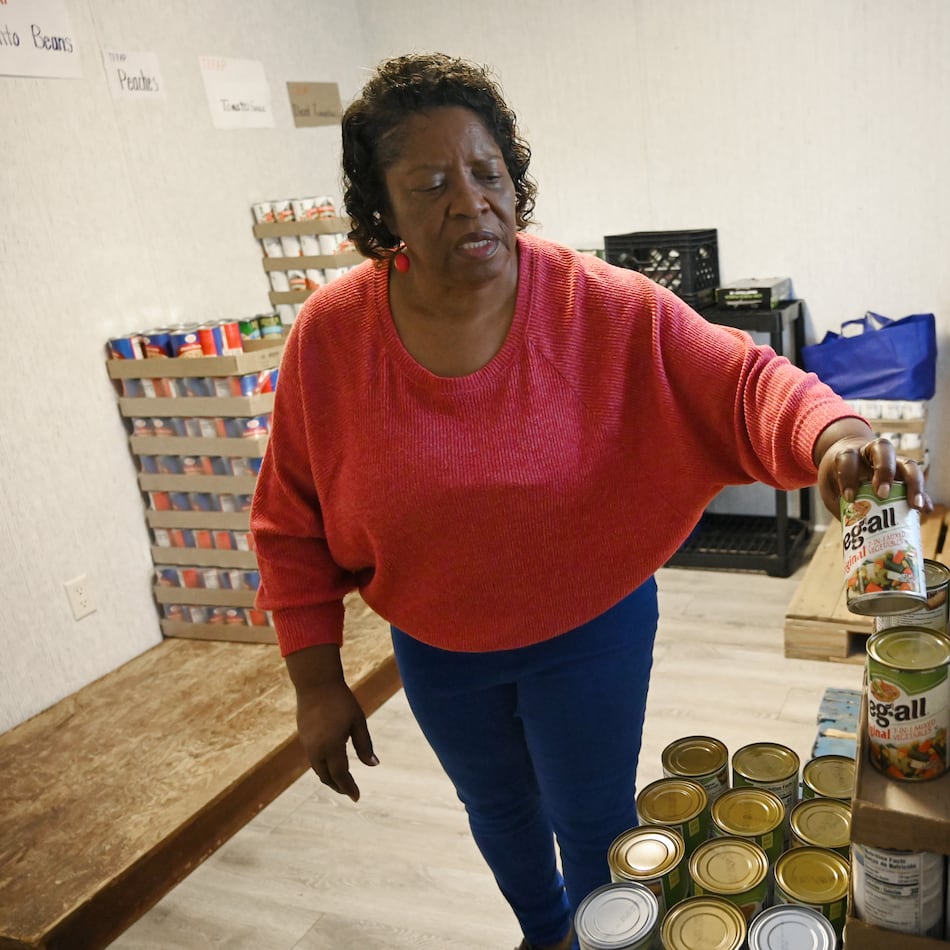In his 36 years in the water industry, Stephen Smith’s job has required him to remove a long list of dangerous contaminants from the drinking water he supplies.
None, he said, have proven as challenging as the “forever chemicals” he and his colleagues at the Chatsworth Water Works Commission are now trying to clean up.
Per- and polyfluoroalkyl substances — better known by their acronym, PFAS — are a class of toxic, manmade chemicals that have been used for decades in nonstick pans, stain-resistant carpets, firefighting foams and certain food wrappers. The compounds do not break down in nature and as a result, they are practically everywhere: accumulating in soil, water and even the human body.
“There’s not really anything you can do to break them down. You just have to capture them and even then, you’re still stuck with it,” said Smith, the general manager of the commission, which serves about 30,000 customers in rural Northwest Georgia.
Now, backed by mounting evidence linking the chemicals to fertility problems, developmental delays and increased risk of certain cancers, the federal Environmental Protection Agency (EPA) could finalize the first-ever, legally enforceable drinking water standards for several PFAS by the end of the year. The new limits could require water utilities’ with traces of the chemicals to make costly upgrades, and there is growing concern about how to pay for them and whether customers will foot the bill.
Water systems in Georgia are eyeing funding from many sources, including federal funds appropriated by Congress. But among the biggest pots of money lies in a pair of class action settlements reached with two of the largest historical PFAS manufacturers: 3M and DuPont.
Credit: TNS
Credit: TNS
This summer, both companies reached tentative agreements to settle claims from thousands of water providers who say that PFAS they produced have polluted water supplies around the country.
DuPont’s settlement would require it to pay roughly $1.2 billion to affected utilities, while 3M’s deal could cost the company between $10.5 and $12.5 billion, depending on how many more water providers discover PFAS as they complete federally-required testing.
The deadline for eligible utilities to opt in or out of the DuPont settlement was earlier this month. The 3M settlement deadline is Monday.
To opt in or not
Dozens of water systems in Georgia — from small providers in Chatsworth and Summerville in North Georgia to larger ones serving cities like Augusta and Columbus — have already uncovered PFAS levels in their water that could exceed the new federal standards.
Columbus Water Works, which draws water from the Chattahoochee River and serves a quarter-million customers, has found concentrations of the “forever chemical” PFOA ranging from 3.8 to 12 parts per trillion. Testing has found levels of PFOS, another PFAS chemical, in Columbus’ water at between 4.3 and 13 parts per trillion. Those concentrations would likely surpass the 4 parts per trillion standards that have been proposed.
Vic Burchfield, Columbus Water Works’ senior vice president, said it’s too soon to know how much it will cost to upgrade its facilities. But a pilot project is underway to determine the most cost-effective method for Columbus to remove PFAS from its water. The results are expected at the end of 2025.
“The technology is out there,” Burchfield said. “We just have to choose which one is going to be the best fit for the treatment of our water.”
Columbus has joined the settlements with DuPont and 3M. In the meantime, he said the city is also exploring other sources of funding, including loans from Georgia’s Environmental Finance Authority, grants and the sale of bonds.
‘A lot of uncertainty’
Other Georgia water providers have chosen to pursue their own litigation.
Earlier this year, the city of Rome settled a lawsuit against 3M, DuPont and roughly 30 other defendants over claims that PFAS produced by the chemical companies and used by flooring manufacturers in Northwest Georgia fouled their water supply. The city is receiving at least $233 million from its settlements, including $75 million from 3M. Rome plans to use the funds to build and operate a new, $100 million reverse osmosis water treatment plant.
DuPont, meanwhile, has sought to keep the details of its agreement with Rome secret until after its $1.2 billion class action settlement is finalized.
In September, DuPont and four allied chemical companies sued The Atlanta Journal-Constitution, The Rome News-Tribune and the city of Rome, to block the release of the amount it is paying to settle with Rome, arguing the figure is a “trade secret.” That type of information is regularly released in the normal course of business through the Georgia Open Records Act.
Credit: HYOSUB SHIN / AJC
Credit: HYOSUB SHIN / AJC
Last month, a Floyd County Superior Court judge sided with the AJC and News-Tribune and ordered the documents be disclosed. But days later, the Georgia Court of Appeals stepped in to delay their release pending appeal.
About 30 miles northwest of Rome, the city of Summerville is also suing 3M, DuPont and others. That case has mostly ground to a halt, after a judge ordered a pause until the chemical companies can finalize their nationwide settlements.
Jeff Friedman, a lawyer for both Rome and Summerville, said he has consulted with more than 100 utilities on their PFAS issues. He said he has seen few that would obtain enough money from the class action settlements to pay for the water infrastructure upgrades they need.
“That would leave a substantial amount in each instance that would have to be paid by the consumers in the form of higher water bills,” he said.
A water utility trade group and an insurance risk analysis firm have estimated the total cost to remove PFAS from water supplies nationwide could be as high as $400 billion.
The AJC asked DuPont and 3M whether they believe the class action settlements offer a fair resolution to affected utilities. A 3M spokesman pointed to recent comments made by CEO Mike Roman.
“ ... All parties — the plaintiffs committee, the court, 3M — we’re all aligned that this is the right settlement to take forward,” Roman said. “So we’ll continue to work with claimants around that.”
DuPont did not immediately respond.
A U.S. District Court judge in Charleston, South Carolina, is set to decide whether to grant final approval to the DuPont settlement on Dec. 14. A fairness hearing on 3M’s deal is scheduled for Feb. 2.
A group of states, cities and water providers have criticized both settlements as inadequate. But just this week, the judge warned that utilities opting out of the settlements are “misinformed” and might wait years before their claims are heard.
If they are finalized, 3M and DuPont settlements would rank among the largest such deals in U.S. history, according to University of Richmond law professor Carl Tobias, an expert on mass torts litigation who is not involved in the cases.
Settling with water providers and municipalities also does not shield the companies from lawsuits filed by individuals or others who may allege they were harmed.
Tobias said municipalities and water providers weighing whether to join have a lot to consider.
Many still don’t know the extent of their PFAS contamination, the cost of upgrades needed to comply with future federal standards or how much it could cost to cover their own potential liability.
“There’s a lot of uncertainty at this point in time ... legal, scientific,” Tobias said. “All that uncertainty makes it really tough to make decisions today.”
Keep Reading
The Latest
Featured





